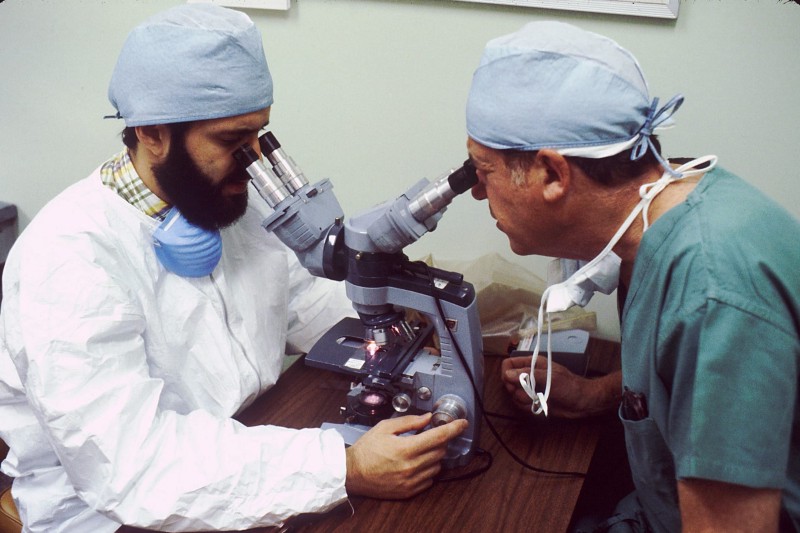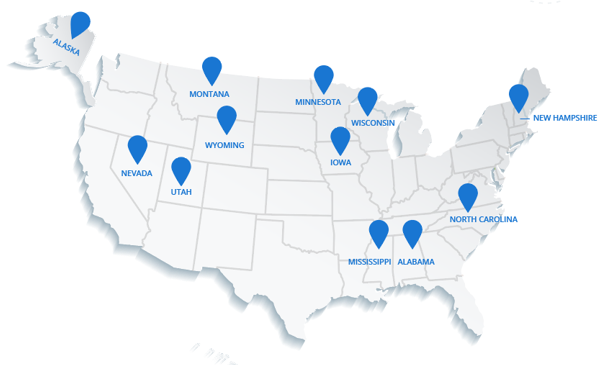It has been almost 100 years since FDR's New Deal, a response to the most significant crisis of that generation, the Great Depression. We are once again facing a crisis, a pandemic that has exposed the frailty of our healthcare system to the core.
If we are to come out of this a greater nationwhich I believe we will major reforms must be taken to alleviate the burdens of those who are suffering, properly allocate resources among important institutions, and prepare for future pandemics. As an emergency medicine doctor working on the front lines in New York City, these are the necessary actions that I believe we must take to restructure healthcare and create a better America.
The intent of this reform is to revamp our beleaguered healthcare system into one that truly cares for clinicians and patients, empowering both to produce the best possible outcomes. The initiatives have to be shared between state and federal governments, as both have their respective roles in making this work. Additionally, many of these proposed initiatives are already underway, so reinventing the wheel would be unnecessary. Thus, I propose Healthcare's New Deal2020.

Federal Actions
1. Domestic Manufacturing of Personal Protective Equipment.
The safety of our nation is of primary importance, and this pandemic has exposed several areas of critical weakness. The most glaring example is our need to import personal protective equipment (PPE) from other nations, namely China. With any biological threat, PPE is essential to maintaining a healthy and unaffected healthcare workforce and thus should be produced domestically.
This is vital to our national defense and could reinvigorate many cities that have been decimated by the globalization of manufacturing and the outsourcing of jobs overseas. This includes everything from simple surgical masks, N95 respirators, ventilators, gowns, gloves, face shields, to disinfectants and cleaning solutions.
2. Domestic Manufacturing of Essential Pharmaceuticals.
Along the same lines, we must have the ability to produce vital drugs domestically. Drugs that mean the difference between life and deathantibiotics, aspirin, insulin, IV fluids, epinephrine autoinjectors albuterol, and many morehave incredible efficacy, have been out of patent for decades, and yet rely on foreign manufacturing. Azithromycin is one of two drugs heavily considered to have potentially life-saving benefits for COVID-19 patients, and yet we have to rely on a foreign nation for it. How we could ship these jobs overseas in the first place is unconscionable, and it is time to bring these jobs and industries home.
3. Allow pharmaceutical sales and trade with countries meeting US regulatory standards.
The questionable actions of certain pharmaceutical companies exemplified by monopolistic practices, such as raising the prices of Daraprim and EpiPens, show how dysfunctional our pharmaceutical industry is. Free market capitalism can work by allowing Americans access to purchase drugs from other countries like Canada that meet US regulatory standards´. President Trump has already begun this process as it would drive drug costs down by opening up competition and allowing free market pricing.
By opening up the North American market to its citizens, we will have a more competitive market with subsequently cheaper pricing. Canada pays less for pharmaceuticals by negotiating collectively as a nation, and the same should be allowed to organizations and states to enter into collective purchasing agreements with pharmaceuticals.
4. Essential Worker Whistleblower Protection Act
It has become evident that some healthcare corporations do not prioritize staff and patient safety, or even the truth, as seen by the recent firing of Dr. Ming Lin for speaking out about the lack of PPEµ. The ensuing number of gag orders that followed only further highlighted the lack of safety clinicians are dealing with.
Whistleblower protection is crucial for all clinicians that speak out against the improper practice of medicine, inadequate safety protection for themselves, and misconduct against themselves or patients. A national mandate protecting those who speak out against injustices is necessary so that we may know the truth, and only after knowing the truth can we adequately address the real issues we're facing rather than creating material for the next Netflix series.
5. Price Transparency in Healthcare
A critical issue already in the works but done via executive order rather than congressional action is price transparency. It is unfathomable how one could think to contain healthcare spending and costs without knowing what the price of a good or service actually is.
This would be along the lines of President Trump's Executive Order on Improving Price and Quality Transparency in American Healthcare, which provides Transparency of Coverage on 11/15/2019·. How could you say that one healthcare system is price gouging compared to another when discovering those costs is almost impossible, especially after adding the convoluted insurance contracts and plans into the mix?
6. Open Charges and Collections Act
Only with clear and known billing, cost, and payments can we truly understand where healthcare dollars are going. In the same vein of transparency, healthcare has been hijacked by administrators across the country¸all with the same goal of maximizing revenue and productivity. At the core of this issue is medical billing. Prior to the Affordable Care Act, many healthcare providers were in private practice and thus controlled and knew exactly what, and who, they were charging under their respective license. With the consolidation of healthcare and corporatization, the majority of clinicians are unaware of what the institutions, hospitals, or staffing groups are charging or even collecting on their patients.
Every clinician should have easy access to everything billed and paid in their name. Surprise billing and balanced billing have come to the forefront of healthcare and providers have been villainized for these unpalatable actions; nevertheless, most have no idea that it is even being done under their name. These are actions done by administrators whose incentives are misaligned with the patient and physician.
7. Mandatory documentation of MOLST upon starting and annual renewal of Medicare
We in medicine have been delegating resources for years now. Every flu season many physicians make decisions about who gets an ICU bed because there is only one, and who is relegated to a lower level of a care, or who gets a potentially life saving medication and who does not. These decisions are usually made at the moment of crisis in a person's life by their loved ones, with little or no preparation for the hard questions: Would your relative want to be on a ventilator? What aggressive measures would your loved one have wanted if their heart were to stop? These are questions that should be answered by the individual when in sound mind and body and thus I propose at the initiation of Medicare and at annual renewal one must document their medical orders for life sustaining treatment (MOLST).
With COVID-19 deaths piling up, these decisions and discussions are happening multiple times a day in the most dire timewhen the individual patient is more often than not incapacitated and caring loved ones are forced to decide without the prerequesite information. Medicine has needed this for quite some time and now more than ever it has thrust those decisions on providers and family members unaware of the patients true wishes, deciding how and when someone would want to live.
8. 5G Telecommunications Act of 2020
This pandemic has fundamentally changed medicine; however one of the bright sides has been the adoption of new technology to facilitate and increase access to care. Telemedicine has been a savior for millions who get to see their providers for chronic conditions, and even manage COVID-affected patients with mild symptoms. Unfortunately, as with every technology, it is only as good as the infrastructure underlying it, in this case the Internet. To this end, America must invest in the national implementation of a 5G network for access and reliability of telemedicine services.
Why in 2020 does a country as innovative as America still have dead spots? A strong domestic network enables us to disseminate information, warnings, and needs more reliably and efficiently. Pretty much every locale in America, no matter how rural, has a post office, town hall, and library. For nationwide telemedicine to reach all citizens, plans should be made to outfit libraries or post offices to have telemedicine terminals.
9. Healthcare Infrastructure Act
Providing quality healthcare requires infrastructure and our ailing hospitals, clinics, critical access services, and FQHCs have long been in dire need of renovation. This act should authorize a significant spend on city, state, and federal healthcare hospitals, ERs, and clinics with a focus on expanding mental health resources. NGOs will not be eligible for this as the non-profit healthcare organizations have made out quite well in recent times by aggressively expanding via profit driven initiatives and cost-cuttingregardless of whether it served the public good.
10. Essential Workers' Compensation Fund
This pandemic has been a call to the nation, asking some to quarantine at home while being a call to duty for those deemed essential. The essential workers are the ones on the frontlines risking their lives everyday to combat this deadly virus as well as keeping the country operating by providing its most basic needs. These workers deserve and have earned the right to financial remuneration in case of death or detriment.
Similar to the 9/11 Victim Compensation Fund, this is necessary to mitigate the incredible risk essential personnel take to protect, treat, and help all of us. Any death or disability incurred by essential workers should be fiscally compensated. Just as risk is often rewarded in business so should it be for individuals.
11. HIPAA Revision 2020Open Communication Act
The sacred covenant between physicians and patients has been broken for some time now, and it is time to heal. One of the major impediments to this is HIPAA. HIPAA has enabled a one-way discussion in which patients are allowed to publicly discuss physicians, institutions, and specific healthcare actors while responses are muted out of fear of HIPAA violations. Healthcare requires that individuals take care of themselves, listen to their providers, take their medications, and attempt to understand their own plan of care; meanwhile, clinicians are expected to provide those treatments, guidance, and education. It is a two-way street between patients and providers and yet clinicians have been shackled by HIPAA and unable to communicate despite the existence of numerous technological means and forums.
HIPAA has to allow providers to respond. If a patient uses a forum to discuss his or her medical information, then that individual has already chosen their respective level of privacy; thus the provider should be allowed to respond in the same medium. HIPAA should be an individual's choice. If a patient would prefer phone, text, email, Facebook, Zoom, or traditional methods, then that should be their choice with the understanding of different levels of privacy and security. Patients should be able to choose how they communicate their medical information and thus choose their level of privacy.
12. Patient Assessment and Provider Protection Act
This goes hand in hand with Press Ganey and the Health Consumer Assessment of Healthcare Providers and Systems (HCAHPS). Healthcare has become synonymous with hospitality, and it is far from it. Healthcare is not hospitality, and patients are not customers. It is that exact mindset that made us woefully unprepared for the current healthcare pandemic. Thus, any association of payment to these patient satisfaction measures in HCAHPS should be immediately revoked and prohibited.
13.National Prescription Drug Monitoring Program
Prior to this pandemic we were in the midst of an opioid epidemic, one that had already cost the lives of over 50,000 people. Up until now, many states have instituted a prescription drug monitoring program by which prescriptions can be tracked. This has been helpful on a state-by-state basis but the country needs a national prescription drug monitoring program. This enables a centralized database by which the opioid epidemic can be tracked and curbed.
14. USA Care 2020
With the looming unemployment tsunami underway, millions of Americans will be without health insurance or even the ability to purchase insurance for the third time in 20 years. Medical bills are the leading cause of bankruptcy in the United States, and with the looming recession, it is imperative to continue to provide healthcare to people, especially when the source of our struggles is biological.
USA Care 2020 would provide a public option for all Americans to participate in, regardless of preexisting conditions, including mental health issues. By making Medicaid and Medicare available to all Americans and mandating that all Americans participate, millions of Americans need not go bankrupt, sick, or uncared for. This will provide a mechanism for all care to be reimbursed. As opposed to supporting big business healthcare, we are supporting individuals who can choose their providers. President Trump has already approved $100 billion in aid to hospitals for uninsured care, instead why not insure the people directly and let them decide where to spend their healthcare dollars?
Doctors, nurses and clinicians: sign up on DirectShifts.com to control your schedule with employers who put you first.

Combined Federal and State Actions
1. Corporate Practice of Medicine Enforcement
Healthcare organizations have consolidated over time, led by MBAs in order to achieve scale and efficiency; multiple mergers and acquisitions have left our systems in the hands of number crunchers rather than healthcare providers. The Corporate Practice of Medicine Doctrine prohibits corporations from practicing medicine or employing a physician to provide professional medical services. On the federal level, healthcare corporations that span numerous states practice medicine and corporate medical groups owned by private equity firms employ much of the clinical labor forceall in pursuit of the almighty dollar and shareholder returns. They will claim that they do not interfere with physician practice, but the reality is that every decision from which supplies to buy, which medications to stock, flexible staffing, and downsizing loss entities despite being safety net services for communities is very much dictating the practice of medicine across the country. These same entities exist on the smaller level with large hospital systems and practice groups within individual states and on both platforms we need strong enforcement of the laws prohibiting the corporate practice of medicine that are in place.
For far too long, shareholder value and the commercialization of the practice of medicine has been emphasized over physicians' well-being and obligation to their patients. Private equity has had a rapidly growing footprint in healthcare without any other goal other than maximizing profits, and this has to stop.
2. Medical Antitrust Reform
Additionally, the last decade has seen a significant amount of consolidation in the various stakeholders in healthcare from insurance companies, staffing companies, and pharmaceutical firms embodying monopolistic and collusive practices. Anti-trust legislation already in place can be used in conjunction with prohibiting the corporate practice of medicine to realign incentives appropriately.
3. Healthcare Review of Reimbursement Act
Our current healthcare structure uses a system devised by a study from 1985 that estimates the relative amount of work a physician contributes to the services they render. This study used a definition of physician's work that took into account the physician's time, mental effort, judgement, technical skill, physical effort, and psychological stress. The paper was published in 1985 and was the basis for the relative value unit (RVU) system that was implemented in 1992 to standardize how clinical services are reimbursed. The only problem is that, in our rapidly changing society, another study has not been commissioned and thus this system has not been recalibrated or even reassessed meaningfully. Under the current system clinicians are incentivized towards procedures and undercompensated for cognitive services. Effectively we are pushed towards volume and procedures and away from providing valuable guidance, education and thought to time-consuming, complex patient encounters. Additionally, reimbursement should be indexed to inflation to account for cost of living adjustments.
This should commission another study immediatelyas well as one every five yearsto reassess the validity and integrity of the system. Additionally, to correctly value telemedicine encounters that have now become a critical part of medicine and will be for the foreseeable future. It is possible that with the aforementioned measures, especially price transparency, we may be able to return to the œusual, customary and reasonable (UCR) payment system before the implementation of the resource based relative value scale (RBRVS).
4. Hazard Pay For Essential Workers
Our pandemic has called essential workers to the forefront to battle a virus we know very little about. It has asked them to put their lives, and their families' lives, on the line, and yet we have no mechanism to compensate for this incredible risk. Hazard pay should be automatically implemented from the moment a state or national emergency is declared.
Risk reward is consummately American and fundamental to capitalism, with numerous slogans and mottos like œnothing ventured, nothing gained. Yet at this time of greatest risk, we are not rewarding those individuals whom we have asked to fight the deadly virus head-on.
5. Essential Worker Violence Act
At a time like this, stress is extremely high and can lead to undue violence. Violence against healthcare workers had already been on the rise with a strained and under-resourced system; now, with the new weight of COVID-19, the pressure is at an all-time high.
At this time of duress, it is imperative that we protect those who are putting themselves out there to serve, protect, and treat America. Similar to assaulting airline staff or a NYC taxi driver, assaulting an essential worker should be a recognized criminal act and prosecuted to that extent.
Doctors, nurses and clinicians: sign up on DirectShifts.com to control your schedule with employers who put you first.

State Actions
As much of healthcare regulation is dictated from the state level, it is prudent to make significant changes on a state-by-state basis. Collectively, we have to push our state legislators to adopt the following proposed changes to further address our healthcare systems' failures.
1. Interstate Medical Licensure Compact for all 50 states.
With the current crisis, having a liquid healthcare workforce is more important than ever. However, by current standards, obtaining a medical license, depending on the state, can vary in time frame, difficulty, and requirements. The Interstate Medical Licensure Compact (IMLCC) has already made great headway with respect to this and we should push this forward to all 50 state legislatures and pass it immediately.
This way states maintain autonomy, and can continue to collect revenue, but allow a mechanism for reciprocity. The practice of medicine, unlike law, does not change much from state to state.
2. Mandatory Nursing Ratios
Mandatory nursing ratios as proposed by the National Nurses United Proposal should also be adopted across the country. Areas hardest hit like NYC are feeling the lack of nurses even more because their starting point was an ED nursing to patient ratio nearing 8:1. The proposed ratio is 3:1.
This is a state issue, as we need to safeguard a ratio that keeps enough nurses in the state but also enough to provide care adequately. This will also reinvigorate an already stretched workforce while increasing jobs. At 8:1, care is substandard and suboptimal without any room to surge, which is what is exacerbating our current crisis.
3. Revoke Certificate of Need (CON)
The regulatory environment has subdued the free market mechanisms that correct for system inefficiencies and have stifled growth and development. One notorious regulation is the Certificate of Need. States that require a Certificate of Need require proving a need in said population for new healthcare facilities; this prevents new facilities and operators from being built and challenging the existing healthcare systems. From numerous data points over many decades, revoking CON will increase access and lower cost.
Effectively, CON provides monopolistic protection regardless of quality or outcome by preventing free market forces. Competition drives excellence and thus needs to be reintroduced to medicine.
4. Revoke Restrictive Covenants
Along with enabling free market practices, physician restrictive covenants should be disallowed. Noncompete clauses are absurd in a profession where treatments and medications are not restricted by institutions and freely available. No single doctor owns biology and yet many contracts continue to perpetuate this binding monopolistic practice. For patients, they have led to disruptions in care and decreased access.
Providers should be allowed to practice freely wherever and for whomever they should please, and these covenants have prevented many from establishing themselves apart from a troubled employer, or even starting a small business and contributing to the economy.
5. Prelitigation Screening Panels
Malpractice reform is the battle cry of every clinician and yet the system has to be balanced to have accountabilityall the while providing due process. We cannot be too lenient on providers, since that will disenfranchise patients, and yet we cannot be too punitive, for we will drive away practitioners. I propose mirroring a system similar to that in Maine.
Maine has implemented prelitigation screening panels that provide a judgement and evaluation by peers capable of dissecting complex medical situations. The panels help to deter frivolous lawsuits; however, they ultimately only make a recommendation. The option to pursue litigation or not is up to the plaintiff
I have not been one to be political publicly nor advocate an agenda fiercely, but this is for the future health of our great nation, its citizens, and its healthcare providers. Many of these proposals are not new; in fact, most have been sourced from both republican and democratic proposals of the past. These ideas are not meant to be partisan; they advocate for the improvement of all Americans' lives, regardless of political party. Its goal is to provide a safer nation, better prepared for the next biological threat, an engaged citizenry, and a reinforced and empowered workforce that is safe and compensated. Altogether, a system Americans deserve.
Signed,
A Concerned Emergency Medicine Physician and Citizen
Raviraj J. Patel MD
Greed is what got us here but it is the Strength of our Spirit that will lead us out
The author is an emergency medicine physician in New York. The viewpoints expressed here are the author's own.
1. https://www.aamc.org/news-insights/where-all-ppe
3 https://www.goodrx.com/blog/epipen-and-daraprim-prices-still-high-despite-public-outrage/
4 https://www.cnbc.com/2019/07/05/trump-administration-preparing-drug-price-executive-order.html
9 https://www.ama-assn.org/about/research/employed-physicians-now-exceed-those-who-own-their-practices
11 https://www.hfmmagazine.com/articles/3239-a-closer-look-at-infrastructure
12 https://www.cdc.gov/drugoverdose/epidemic/index.html
13 https://www.investopedia.com/top-5-reasons-why-people-go-bankrupt-4773404
14 https://www.hhs.gov/provider-relief/index.html
15 https://www.ama-assn.org/media/7661/download
16. https://hbr.org/2019/10/the-role-of-private-equity-in-driving-up-health-care-prices
18. https://jamanetwork.com/journals/jama/article-abstract/374653
19. https://www.ajmc.com/focus-of-the-week/violence-against-healthcare-workers-a-rising-epidemic
21. https://rules.cityofnewyork.us/tags/driver-protection
23. https://www.nysna.org/our-campaigns/safe-staffing/safe-staffing-get-facts#.Xpg3ulNKifU
24.
Tags:
InspirationAugust 7, 2022




Comments